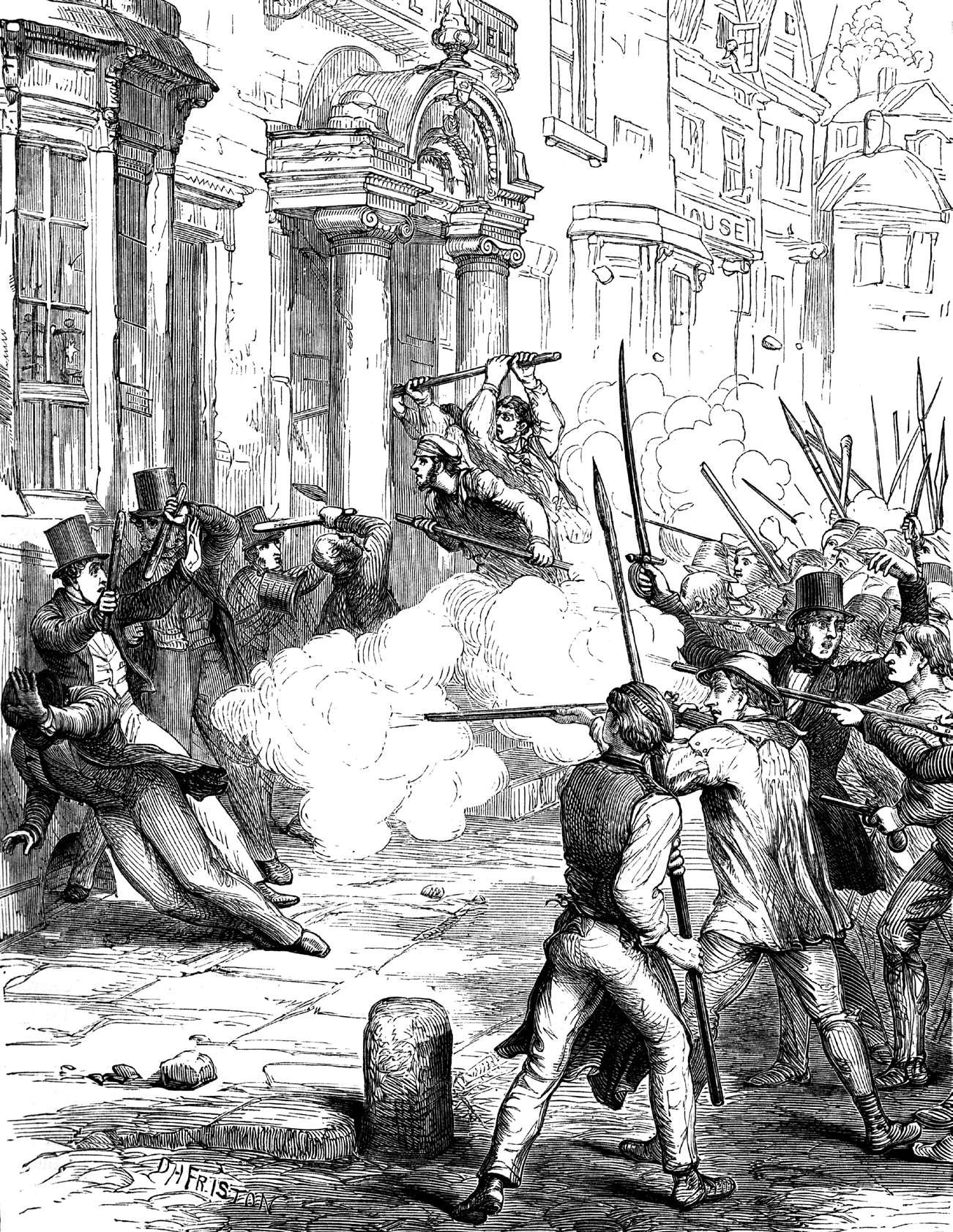
On 26 June 1836, the London Working Men’s Association (LWMA) was founded. This event marked the origin of the Chartist movement. By October, the LWMA had agreed a programme of reforms: ‘Universal Suffrage, the protection of the Ballot, Annual Parliaments, Equal representation, and no Property Qualification for members’. This included five of the six key demands in the People’s Charter, which was eventually published in 1838. This article considers what factors had led to the emergence of Chartism, why it became such a significant force between 1838 and 1848, and why it nevertheless failed.
The British economy and society were experiencing rapid change. The population doubled between 1801 and 1851. This population increase had gone hand-in-hand with rapid urbanisation. Manchester, for example, a town of around 90,000 in 1801, had more than doubled in population by 1831, and doubled again by 1851 to 400,000. Such rapid expansion created huge problems of overcrowding, poverty and disease, and it was revulsion against these which provided the bedrock of support for Chartism. Yet the fact that the six key points of the People’s Charter called for political reform, rather than economic or social reform, suggests that there was more to it than that.
Your organisation does not have access to this article.
Sign up today to give your students the edge they need to achieve their best grades with subject expertise
Subscribe




